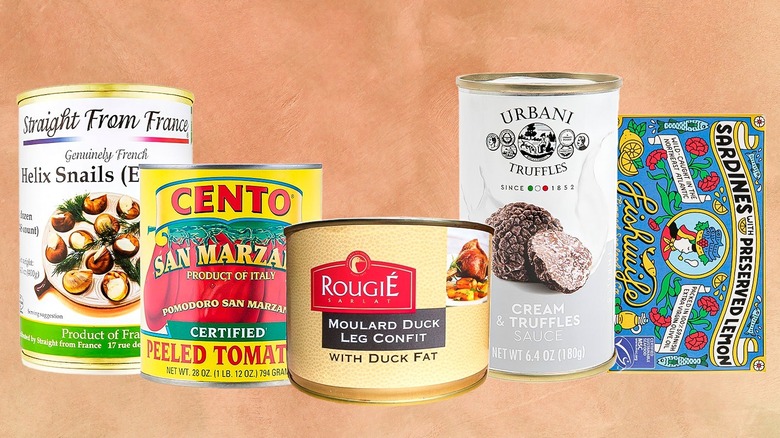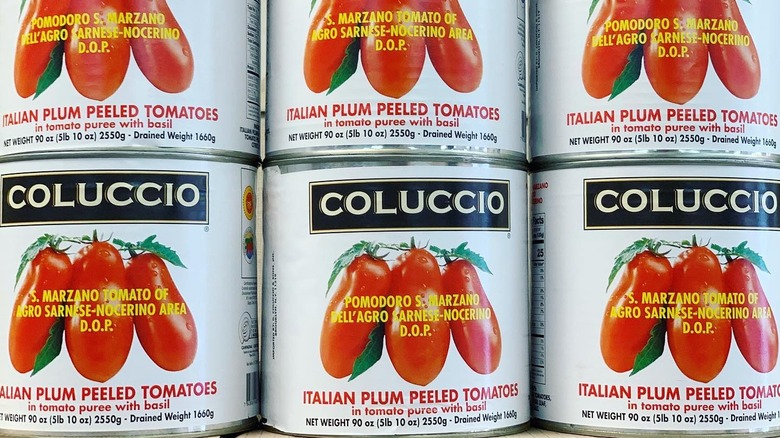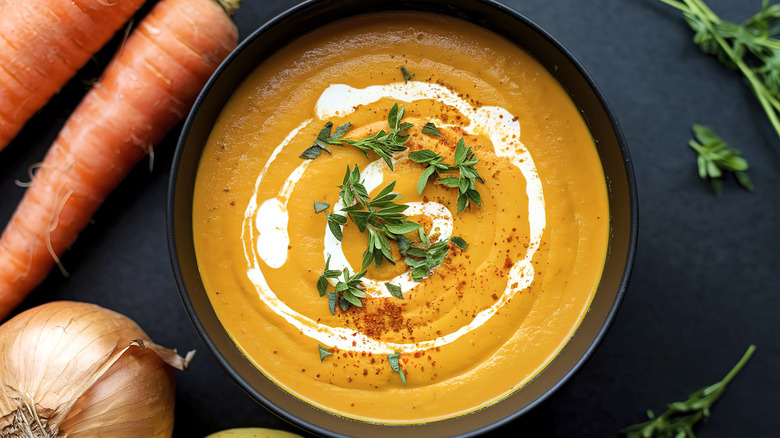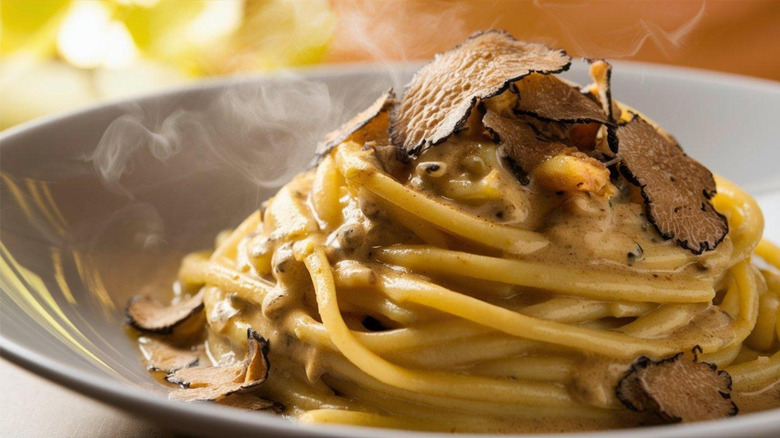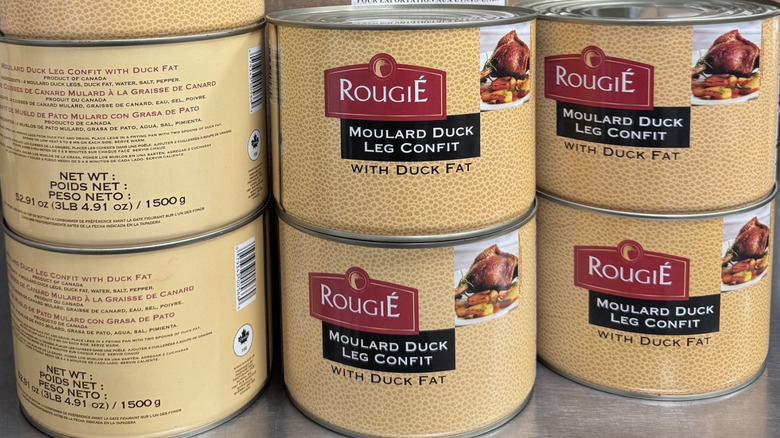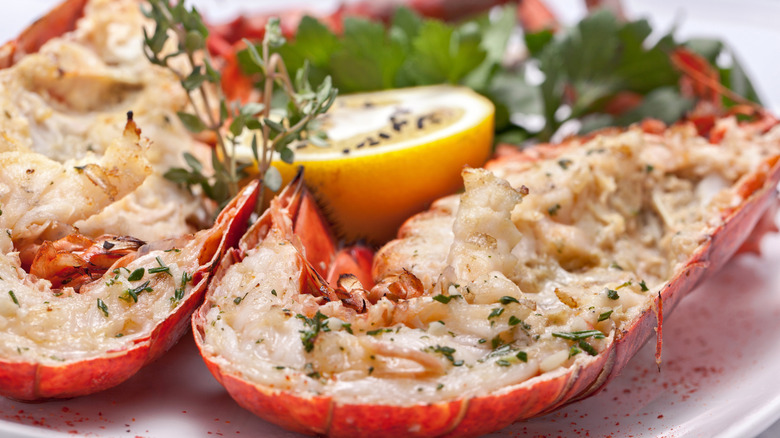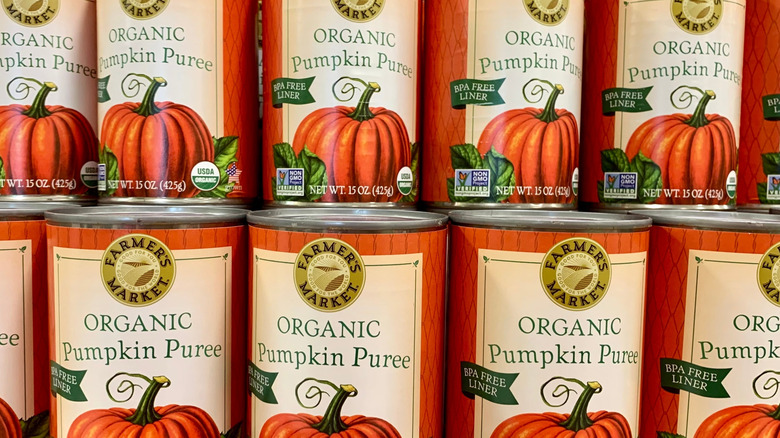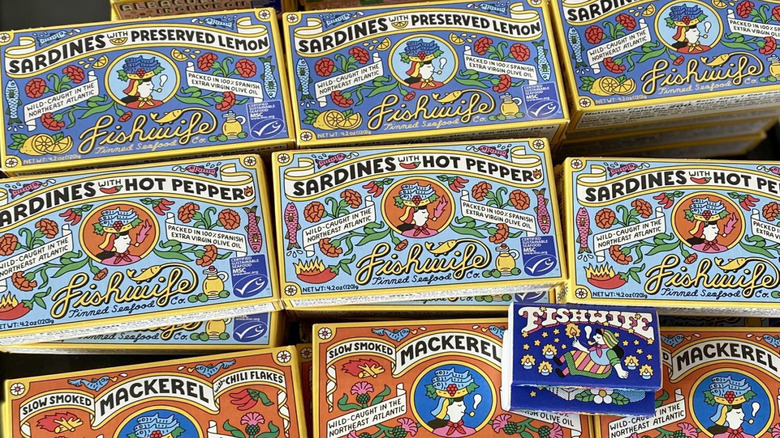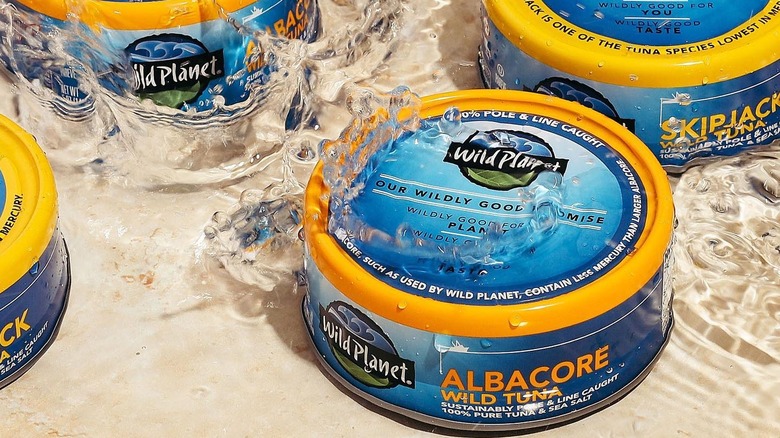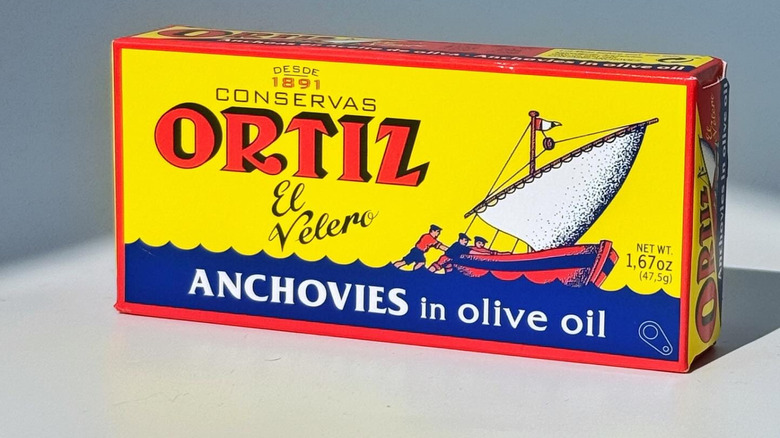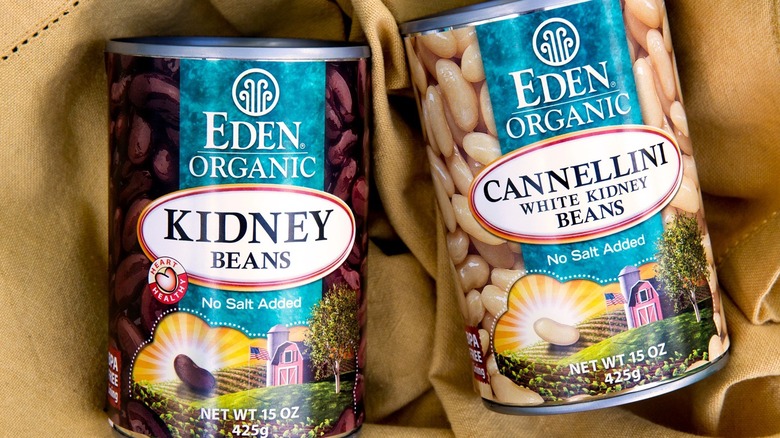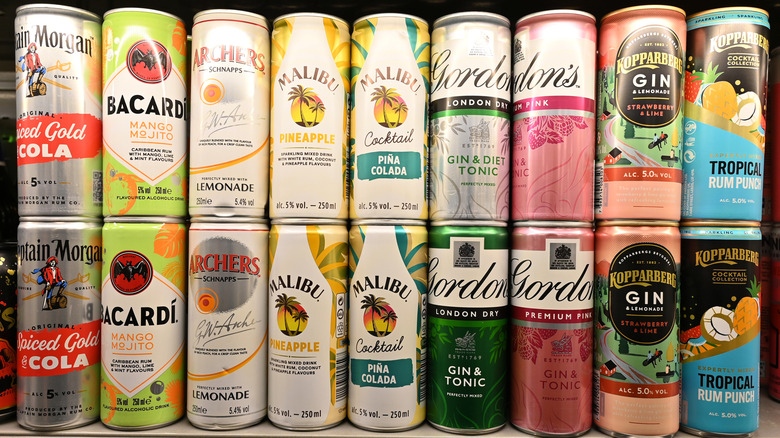14 Canned Goods That Are Way Too Overpriced For What They're Worth
Many — myself included — would argue that the invention of canned goods is up there as one of the most important contributions to how our species consumes food. Like many of humanity's technological breakthroughs, canning was the product of warfare. In 1795, French Emperor Napoleon Bonaparte offered a considerable purse to whoever could find a solution to keeping his armies consistently fed. It would be 15 years before confectioner Nicolas François Appert won said prize for his novel canning method, and decades longer before chemist Louis Pasteur demonstrated precisely why canning kept food fresh for extended periods of time.
Canning is an incredibly effective way for us to transport food across the world. Canned food is typically cheaper than fresh alternatives, too. This isn't necessarily due to a lack of quality but rather the fact that it can be mass-produced and stored for longer by suppliers. It's not unusual to see certain canned goods command a premium, and high prices can sometimes be justified. Some goods will always be expensive, whether they're canned or not, but it can be difficult to know whether you're simply paying for a name brand or for a sustainability label that doesn't deliver.
As someone with a long career in the international hospitality industry, I've tried all manner of canned goods, from the commonplace to the unusual. I've also been able to compare canned versions of food to the real thing. Today, we're going to look at some of those that just aren't worth their high price tag.
Imported canned tomatoes
Of all canned goods, few are as versatile as tomatoes. Whether they're whole, chopped, diced, or pureed, canned tomatoes can form the base to countless dishes across dozens of cuisines. The pantry staple is a key ingredient in Italian pasta sauces, Indian curries, Mexican chili con carne, and all manner of soups and stews. Canned tomatoes can be incredibly cheap. Even in some of the more expensive countries I've lived in, budget-friendly options could easily be found for less than a dollar. It's true that paying extra can net you more flavorful results, but there's a point of diminishing returns. Pretty much every recipe that calls for canned tomatoes uses plenty of other ingredients and seasonings, too, so you're not likely to notice a huge difference in your final meal.
The most expensive canned tomatoes are typically imported, usually from somewhere like Italy that's famed for its tomato-based dishes. San Marzano tomatoes, for example, bear the coveted DOP label, but this mark of geographical authenticity doesn't guarantee superior flavor. There are plenty of acclaimed chefs who acknowledge that domestically grown tomatoes can be just as good in the right recipe, and splurging on a name brand might be a waste of money.
Gourmet soup
Soup is one of the ultimate canned goods. Packaged as a fully formed, tasty, and nutritious meal, it's incredibly easy to heat up in the microwave, on the stove, or even over a campfire. The quality of canned soup can vary massively, and some are better saved for using as a recipe component rather than a main meal, but there are always reliable budget options.
Over time, premium soups have emerged, boasting extra ingredients and healthier nutritional lists, but they're not always worth the increased price. Healthy food labels aren't always as clear-cut as they imply, yet they regularly come with a cost increase or laughably small portion recommendation. It's also incredibly easy to enhance a basic can of soup with just a few simple ingredients, and nutritious soups aren't particularly hard to make at home. Plus, homemade soups generally freeze well — you can make and portion large batches to save time and money, easily defrosting them at your convenience. This isn't to say you should avoid premium canned soups, just that it's worth checking the label and weighing up your other options before paying more than necessary.
Truffle pasta sauce
I've long felt that truffles are misunderstood. The fungal delicacy is notoriously rare and difficult to harvest, with a limited shelf life, meaning truffles have always been a luxury cooking ingredient. In more recent years, it appears that truffles have reached the masses; however, ironically, it seems that many people don't like the taste. Part of the reason is scientific, as the compound in truffles that gives them their signature aroma is undetectable by some and overpowering to others. In my experience, the main issue is that the most affordable way to experience truffles — usually in premade oils or infused sauces — is inauthentic.
Truffle-based pasta sauces from a can never replicate the taste of freshly shaved truffles. They rely on synthetic or concentrated truffles, the flavor of which is almost always too strong and one-dimensional compared to the complexity of the real thing. Even if you're someone who doesn't mind the intense flavor, producers still rely on the ingredient's reputation to jack up the prices of truffle-flavored products. I've been fortunate to try fresh truffles on a handful of occasions, and it's incomparable to the flavored sauces you'll pay over the odds for in a supermarket.
Cassoulet
I'm going to call out a few canned versions of classic French dishes in this list, starting with cassoulet. Cassoulet is a deliciously rich, traditional stew from Southern France, made with vegetables, beans, and a variety of meats. Regardless of the price or quality, canned cassoulet never tastes as good as the real thing.
However, my biggest gripe is that canned cassoulet is always too expensive. At the lower end, it might cost as much as a premium soup, but I've also seen cans priced as high as what you'd pay in a restaurant for the real thing. This completely defeats the point of the dish. Cassoulet's rustic medieval roots speak of a dish that was intended to be a cheap, hearty, and filling meal for peasants. It's a meal that's simple to make at home with staple ingredients you already have on hand, and it can be enjoyed even when it doesn't follow strictly traditional recipes. If you're set on trying authentic cassoulet, you're better off treating yourself at a French restaurant, rather than being let down by a lackluster canned version.
Escargot
I appreciate that the idea of eating snails is off-putting to many, but the classic French dish is a genuine delicacy when prepared by someone who knows what they're doing. The texture is not dissimilar to oysters, mussels, or certain mushrooms — slightly chewy but still delicate to bite. When paired with a buttery, garlicky sauce, every bite is a flavor sensation.
However, the dish only really works when the texture is perfect, and the only way to guarantee that is with freshly cooked snails. Canned escargot has already been cooked once, and reheating it makes it taste too rubbery. I also find it lacks the subtly sweet and earthy notes of the fresh equivalent. You can attempt to make up for this with a flavorful sauce, but that kind of defeats the point of the dish. Plus, like cassoulet, a premium can of escargot often ends up costing as much as you'd pay in a French restaurant for a fresh version of the dish prepared by an experienced chef.
Rougié Moulard duck leg confit
Roughly translating to "conserve" in French, confit is another traditional cooking method that's as popular as ever in modern times. It involves curing the meat of choice — duck is the most famous option — before cooking it in melted fat, producing a stunningly rich and flavorful dish. While making duck confit isn't extremely difficult, opting for a canned version is fairly common.
Unlike escargot or cassoulet, canned duck confit can produce incredible results. While working as a chalet manager in the French Alps, we regularly served duck confit to our guests, and a talented cook can work wonders with the canned variety. If anything, giving the meat time to absorb the fat only improves the flavor. Out of commercial necessity, we were forced to opt for one of the cheapest products we could find, and it was still our guests' favorite meal of the week. While that doesn't mean the budget option will always be the best, it does make it hard to see the benefit of paying for a super expensive version. Rougié is by no means a bad brand, but it definitely leans into its French roots to increase its prices higher than they need to be.
Canned lobster
I'll admit that I'm someone who enjoys lobster but doesn't quite get the hype, at least not when there's more flavorful and affordable seafood to be had. I've always found the taste itself to be lacking, relying more on the way the specific dish is prepared with buttery sauces and bold seasonings. As with escargot, this makes the texture of lobster extremely important for a quality meal.
Unfortunately, canned lobster tends to have a chewy, rubbery texture that's hard to get past. Plus, because lobster is known for being expensive, canned versions don't come cheap. While not everyone has the luxury of living somewhere where it's easy to source fresh lobster, there are other solutions. Culinary purists may scoff at the idea of lobster that isn't prepared fresh, but frozen lobster is a reasonable alternative. There are even professional chefs who prefer using frozen lobster from time to time, as it can be easier to prepare.
Organic pumpkin puree
As a Brit, pumpkin doesn't factor into our seasonal cuisine nearly as much as it does stateside. That said, multiple excursions to the United States have made me a pumpkin convert, and I'm impressed by all the tasty ways one can make use of pumpkin puree.
I will say, however, that I've struggled to understand why some canned pumpkin puree products are priced so much higher than others. A common factor appears to be the labeling, with "organic" versions often costing twice as much as their cheaper counterparts. The main issue is that organic labeling is generally convoluted, and it isn't always as good as it sounds. Also, making pumpkin puree is incredibly easy. Whole organic pumpkins are inexpensive and just need roasting and processing. By making it yourself, you get far more control over consistency, and you can precisely tweak your seasonings. By all means, opt for canned puree out of convenience, but just be aware that the most expensive options aren't always worth the price.
Fishwife sardines
There's no denying that Fishwife canned sardines have an eye-catching package. However, when they retail at $32 for a pack of three, it makes you wonder what makes them worth that much.
One could point to the fact that Fishwife sardines are wild-caught, but that argument doesn't hold water, as all sardines are wild-caught. I have no issue with paying a little extra for sustainably sourced products, but it seems slightly disingenuous to use this particular label as a selling point. Fishwife's sardines are sourced from a sustainable fishery off the coast of Cornwall in England, but then shipped to Spain for hand-packing. Spain is famous for its high-quality canned fish, but I can't help wondering whether transporting these fish across Europe to be shipped across the Atlantic is all that environmentally friendly. In terms of flavor and texture, Fishwife sardines generally receive positive reviews, but it's still hard to justify such a high price point when it's not hard to elevate a much cheaper alternative.
Wild Planet albacore tuna
Like Fishwife, Wild Planet is another brand that's quick to promote its sustainably sourced fish. In the case of its canned albacore tuna, it makes a similarly unnecessary claim regarding wild-caught fish. Also known as white tuna, albacore tuna is almost always caught in the wild, and the fishing method itself is what makes a difference. This isn't to say Wild Planet isn't a sustainable brand, just that the label seems geared towards a higher asking price.
Additionally, albacore tuna isn't as flavorful as other types of tuna. It has a softer texture than skipjack and yellowfin tuna but has a much milder taste, and it's rare that you'll find it a better option in most recipes. Nutritionally, there isn't a huge amount of difference either. At $24 for a pack of four, Wild Planet's albacore tuna isn't eye-wateringly expensive. However, when you can find cans for half that price, it's hard not to feel the brand is overpriced, regardless of its sustainability credentials.
Ortiz anchovies
As I mentioned earlier, Spain is world-renowned for its canned goods, particularly seafood. This reputation is partly thanks to historic companies like Ortiz, which has over 130 years of experience in the industry. It's true that Ortiz anchovies are delicious and can be worth the money, but it's not always the case.
Anchovies are one of the most sustainable types of seafood, so that doesn't really factor into the price. Some of the cost is down to labor, as the company hand-prepares its fish, and some is likely due to the lengthy curing process and quality olive oil the anchovies come packaged in. If anchovies are the star of your dish, Ortiz's offering can be a solid choice; otherwise, pick a more wallet-friendly alternative. If you're using anchovies as a flavoring ingredient, perhaps as an umami booster, everything that makes Ortiz worth the price will get lost among the other ingredients.
Eden beans
Canned beans aren't far behind tomatoes in terms of their staple status. A cheap yet filling source of protein, beans can be used to pad out all manner of dishes. Many varieties of raw beans need soaking to reduce their cooking time and make them easier to digest, so being able to cook with them straight from the can is incredibly convenient. Eden beans aren't terribly expensive, but they can still be twice the price of other brands.
Cheaper bean brands are usually just as reliable as the expensive ones, so it's rare that paying more will make a difference to your meal. Most beans have a pretty mild taste, and it's not hard to make canned beans taste homemade with the right recipe. You're typically just paying more for a name brand or for a sustainable product. Again, I'm a strong believer in sustainability, but it's still possible to find cheaper products that take care of the environment and their farmers. Goya beans, for example, are often around half the price of Eden beans. They work just as well in pretty much every recipe, and they have reputable sustainability credentials.
Pre-mixed cocktails
As someone with an extensive professional background in cocktails, I have fairly strong feelings about pre-mixed canned cocktails. I've tried plenty of different brands and styles over the years, but I'm yet to find one that comes close to the real thing.
Everything about a cocktail is important, whether it's the ingredients, the technique for making it, the glass, or the garnish. Each plays its part in creating a specific drinking experience, and none of these are replicable in a can. Even focusing on taste alone, many cocktails are too hard to recreate. For example, sparkling canned cocktails are common because they're more shelf-stable, but carbonation doesn't play well with citrus juice. While I'm sure companies put plenty of resources and research into creating canned cocktails, they still haven't produced a drink that tastes as good as one handmade by a trained bartender. From a price perspective, a canned cocktail usually costs less than one from a bar, but they're often a lot more expensive than if you were to make your own simple cocktails at home.
Caviar
Like truffles, caviar is a food that has a long-held reputation for being extremely expensive. While it's true that caviar is essentially just fish eggs — also known as roe — the authentic stuff is sourced solely from sturgeon. Sturgeon are an endangered species, so caviar production relies on tightly controlled fish farming. Throw in the fact that the fish take many years to mature enough to produce eggs, and it's understandable why caviar costs so much. That said, when a kilo of Grade A caviar can cost as much as a car, it's fair to question whether the price is justified.
I've only tried caviar on a handful of occasions, and while it was a memorable experience, it's not worth the money based on taste alone. It's a status food, and having worked in restaurants in less economically developed countries, it's hard to support the idea of paying so much for so little, especially knowing how little it can cost to make some of the most delicious meals on the planet. Plus, caviar isn't an especially unique food. There are plenty of alternative roe options that are rich, creamy, and briny enough to use instead of caviar.
